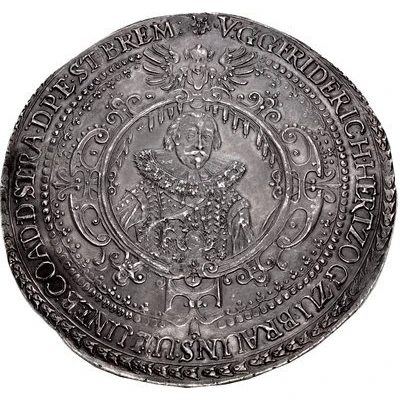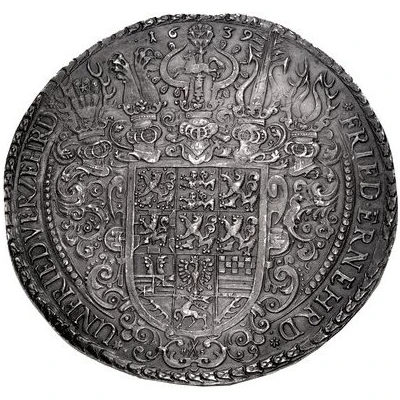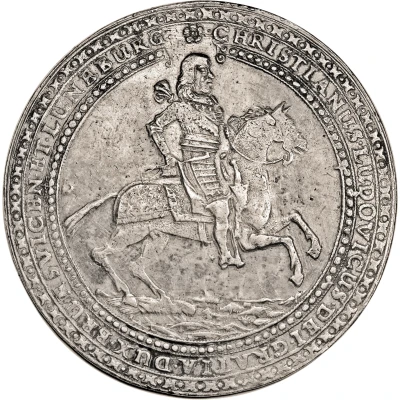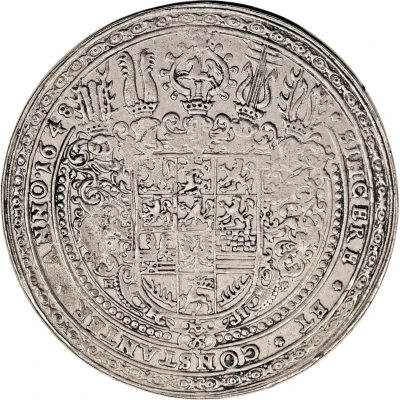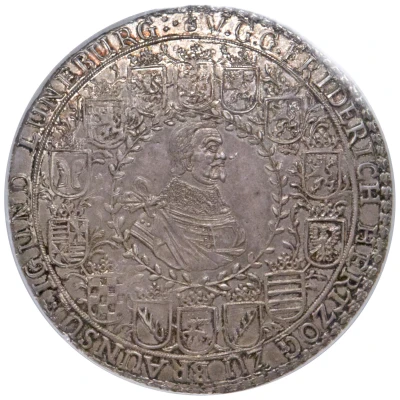
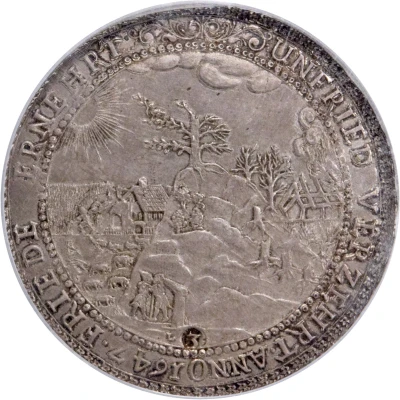

© Heritage Auctions
3 Thalers - Frederick V Löser
1647 year| Silver | 86.80 g | 80 mm |
| Issuer | Brunswick-Lüneburg-Celle (German States) |
|---|---|
| Duke | Frederick IV (1636-1648) |
| Type | Standard circulation coin |
| Year | 1647 |
| Value | 3 Thalers |
| Currency | Thaler |
| Composition | Silver |
| Weight | 86.80 g |
| Diameter | 80 mm |
| Shape | Round |
| Technique | Hammered |
| Demonetized | Yes |
| Updated | 2024-10-05 |
| Numista | N#183144 |
|---|---|
| Rarity index | 97% |
Reverse
Dichotomic scene; to the right a landscape with felled trees and a burning building watched by a nearby bird (owl?) in a withered tree, to the left is a more idyllic scene of farmers, shepherds, and miners in a landscape beneath the sun overwatched by a nearby dove with an olive branch in its beak. A "3" denoting the weight in Talers is stamped at the bottom.
Script: Latin
Lettering: UNFRIED VERZEHRT · ANNO 1647 · FRIEDE ERNEHRT
Comment
Friederich V [1636-1648], Clausthal mint, Lippold Wefer as mintmasterThe Thirty Years' War of 1618-48 was a devastating conflict for the population of Central Europe, as vast mercenary armies were essentially living off the land through pillage. A great number of soldiers were killed in battle, but these figures are dwarfed by the millions of civilian deaths caused by the famine and disease triggered by the various campaigns. A number of truces had come into effect between the various state actors throughout the 1640's, such as the aforementioned Truce of Ulm signed on 14 March, 1647 by France, Sweden, Bavaria, and Cologne. The final peace came after a series of treaties were negotiated in Münster and Osnabrück between May and October of 1648, collectively known as the Peace of Westphalia. (Source: From the Cape Coral Collection of Multiple Talers)
Minted from silver ore discovered at the Clausthal mine.
Interesting fact
One interesting fact about the 3 Thalers - Frederick V (Löser) 1647 coin from Brunswick-Lüneburg-Celle (German States) is that it features an image of a lion on the reverse side, which was a symbol of strength and power in the region at the time.
